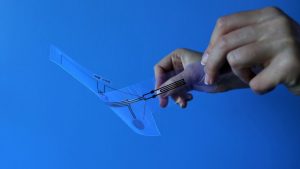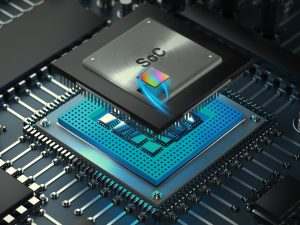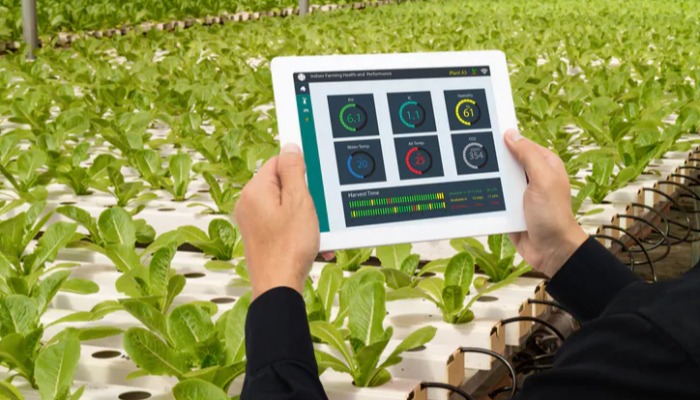You probably know more about the health of your car than you know about your own health. When your car needs an oil change or a part is malfunctioning, embedded computers instantly let you know there is an issue. A similar “check engine” light remains the elusive grail of human health. New developments in patient recovery and health monitoring devices make me believe it will soon be within our grasp.

Today, most advanced clinical-grade monitoring equipment can’t leave the hospital and go home with the patient. The technology also limits the kind of information that wearable fitness devices can provide people during workouts and in daily life. Another big hurdle other is the inability to create a “personal baseline” for people. That is traditionally defined as measurements made during the occasional doctor visit — think blood pressure and heart rate and reflexes — compared to a global average that blends age, ethnicity, diet, altitude, and many other factors. My colleagues and I define personal baseline differently: real-time measurements of what’s happening in your body now compared to what it was this morning, yesterday, last week, and last month.
We’re reaching a point today where at-home clinical-grade data and a personal baseline of data for better diagnoses and maintaining better health overall are not only possible, but on the horizon.
Flexible electronics are the key to “cutting the cord” and to establishing a usable set of values to bring diagnoses and health monitoring to the next level. It’s the focus of our work at NextFlex, a consortium of companies, academic institutions, non-profits, and state, local and federal governments, funded in part by the Department of Defense. Its mission is to advance U.S. manufacturing of flexible hybrid electronics. By developing devices that conform to and stick to an individual’s skin, we’ll be able to unlock a new level of health monitoring and preventive care.
Lighting the fuse
Providing health data quicker and more consistently than ever can help flag potential issues before they turn serious. A medical scanner developed by 22-year-old Peeyush Shrivastava, for example, can diagnose heart diseases in 90 seconds. At this year’s Consumer Electronics Show, wearables beyond step track counters proliferated, including a long-touted UV sensor from L’Oréal that can be attached to a fingernail and Lenovo’s attachment that turns a smartphone into a monitor of blood pressure, heart rate, and other conditions.
The U.S. Defense Threat Reduction Agency and Johns Hopkins University teamed up to learn whether as-yet-undetected cases of the flu could be detected by combining continuous measurements of temperature and heart rate. It spotted signs of the flu within half a day, compared to one day by tracking just heart rate and 4.5 days by tracking just temperature. Think of how many fewer cases of flu would be spread if people knew they were infected in just a half a day.
Health care innovators are beginning to tackle the needs of medical care much as data scientists might, delving into statistics to find patterns and detect anomalies. Gathering health information continuously throughout the day, rather than during sporadic office visits, should expand the ability of health care professionals to treat disease. Those data will need to be monitored and presented in an informative way, but with more data, physicians and health care organizations will ultimately be able to tackle health problems more proactively.
The path forward
While it will take years for some of this work to become commercially available, several projects will come to fruition sooner. The Cleveland Clinic, in its predictions on medical innovations in 2018, sees an Enhanced Recovery After Surgery protocol being introduced by the end of this year. It is designed to speed recovery and reduce complications from surgery, essentially making health care more seamless and unobtrusive.
The idea of speeding recovery speaks to the next big step in health care innovation — getting patients out of hospitals and back into their homes. There is an ongoing trend toward sending patients home from the hospital as soon as is feasible. Brigham Health in Boston is one of a growing number of U.S. health systems encouraging hospital-level care at home for acutely ill but stable patients. West Virginia University found that it could send 80 percent of its tonsillitis patients home for recovery less than four hours after surgery rather than the mandated six-hour waiting period. They’re now calling for an individualized approach to recovery.
The idea of having more data for better diagnoses to get patients home faster for further care and treatment is only one half of the way forward. We also need comprehensive monitoring of people that can deliver clinical-quality data to health care providers to preemptively monitor and alert them to anomalies before they get sick.
The importance of flexible electronics
Another one of the Cleveland Clinic’s notable innovations for 2018 is pacemaker-like devices to control sleep apnea. They point to a future where medical devices are connecting to the Internet to provide a host of advancements in wearables. Step one includes devices like these sleep apnea pacemakers that continuously monitor an individual’s breathing and adjust automatically.
To make health care unobtrusive, it’s important to take health-monitoring advancements a step further than externally worn smart medical devices. That means integrating medical monitoring devices with people. Your car’s monitoring systems are integrated with the engine and other systems of the car — they aren’t attached to its outer door or trunk. It will need to be the same way for medical monitoring: you’d notice if you were wearing a watch but might forget you’re sporting a bandage. Use of the monitor would increase, thereby improving the quality of data.
This is where flexible electronics come into play. They have the potential to create truly unobtrusive medical devices.
Sweat and saliva, for example, can tell us a lot about health. Researchers with GE Global Research have been working with NextFlex and other partners on a wireless patch that can detect the level of sodium, potassium, and other electrolytes in sweat, analyzing it in real time to give athletes and those in combat an early warning about dehydration. Teams at the Palo Alto Research Center and University of California, San Diego have partnered with NextFlex to develop a mouth guard that can monitor glucose and lactate levels in saliva to provide early warnings of exhaustion and organ distress.
GE is working on flexible electrocardiograms that aim to lower costs and improve comfort by replacing bulky, wire-laden electrocardiogram monitors with slim, wireless versions that can reliably communicate between patient and physician, providing instant and constant readings of how the body is responding to various conditions.
The future of medical monitoring won’t require us to be cyborgs, sprouting a multitude of sensors and displays out of different parts of the body. A much subtler touch will be needed. In a car or any other computer-powered system, the monitoring is seamless and constant, ready to alert us to problems as they arrive. If we think of the body like a computer, we will see that it has always had self-diagnostic abilities — and we are just now finding out ways to understand what it’s telling us through flexible, unobtrusive sensor devices that will make a human-focused “check engine” light a reality.
Source from:EPT

 Английский
Английский  Китайский
Китайский  Немецкий
Немецкий  Корейский
Корейский  Японский
Японский  Farsi
Farsi  Portuguese
Portuguese  Russian
Russian  Испанский
Испанский 





